The Current View
A lengthy downtrend in sector prices had given way to a relatively stable trajectory after mid 2013 similar to that experienced in the latter part of the 1990s and first few years of the 2000s.
The late 1990s and early 2000s was a period of macroeconomic upheaval during which time sector pricing nonetheless proved relatively stable.
Relative stability suggests a chance for companies genuinely adding value through development success to see their share prices move higher. This was the experience in the late 1990s and early 2000s.
Still vulnerable cyclical conditions were aggravated in the second half of 2015 by a push from investors worldwide to reduce risk. Sector prices were pushed to a new cyclical low. These conditions were reversed through 2016 and 2017 although sector prices have done little more than revert to the 2013 levels which had once been regarded as cyclically weak.
With a median decline in prices of ASX-listed resources companies through the cycle of 89%(and 30% of companies suffering a decline of more then 95%), the majority of stocks remain prone to strong 'bottom of the cycle' leverage in response to even slight improvements in conditions.
Has Anything Changed?
The strength of the US dollar exchange rate since mid 2014 had added an unusual weight to US dollar prices. Reversal of some of the currency gains has been adding to commodity price strength through 2017.
Signs of cyclical stabilisation in sector equity prices has meant some very strong ‘bottom of the cycle’ gains.
Funding for project development has passed its most difficult phase with the appearance of a stronger risk appetite.

Resource Sector Weekly Returns

Market Breadth Statistics
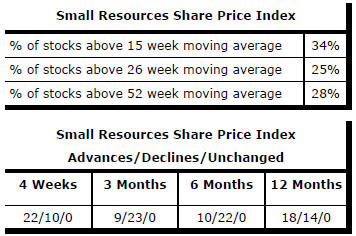
52 Week Price Ranges
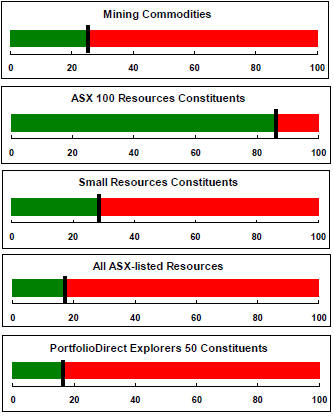
Equity Markets

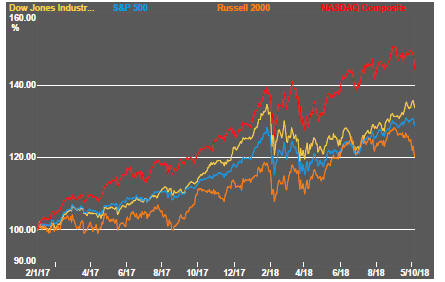
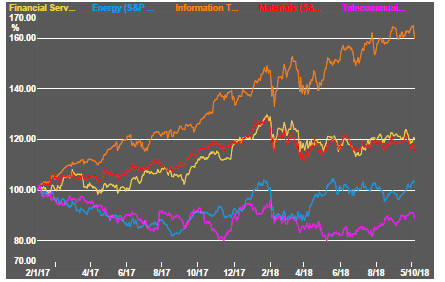
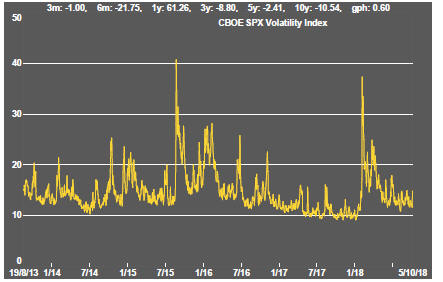
Markets turned sharply lower as US bond yields rose in concert with a strong US labour market.
The smaller US stocks, represented by the Russell 2000, have shown particular weakness, along with technology stocks which had been the leading sector.
The Russell 2000 performance is especially perplexing given the apparent state of the US economy. That said, the direction of the index is consistent with the US economy living on successive sugar hits from monetary policy and looser fiscal policies both of which are likely to be less potent economic forces in the year ahead.
US labour market statistics for September showed further strong employment gains with notably large upward revisions to data from prior months.
Despite investors’ constant assertions that markets are forward looking, the higher bond yields precipitating weaker equity markets come after lengthy efforts by the US Federal Reserve to manage expectations of the direction of policy. The Fed’s attempt to lead market expectations appears to be floundering as yields push higher, signalling some confusion about whether rates may be pushed ahead more aggressively than had previously been foreshadowed.
The one-way market bets which have prevailed for several years, if not close to a decade, may have ended. The price action in the latter part of the week shows signs of ushering in a new phase in which volatility is higher for a prolonged period.
Resource Sector Equities
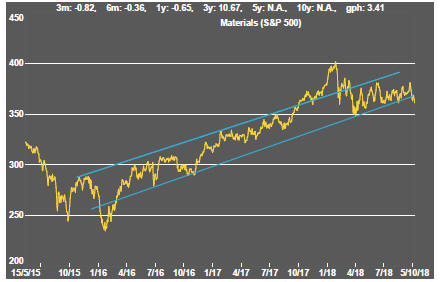
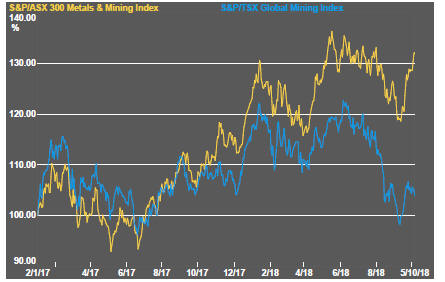
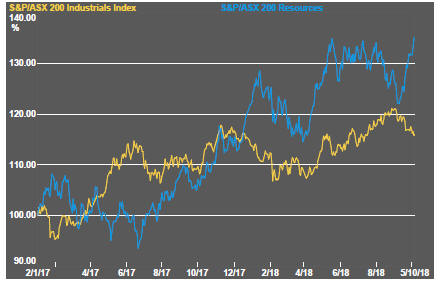
The performance of the market leading mining stocks has been streets ahead of broader sector indicators. There has been negligible trickle down to the rest of the market from the flow of funds into the sector. Once again, the small end of the market - that is, explorers - undershot the market leaders.
The market leaders, which had been moving in concert with relatively strong Chinese economic conditions, must now be under pressure as neither equity markets nor Chinese economic performance is as supportive as they had been.
Australian equity markets have been helped by the weaker Australian dollar.
Interest Rates


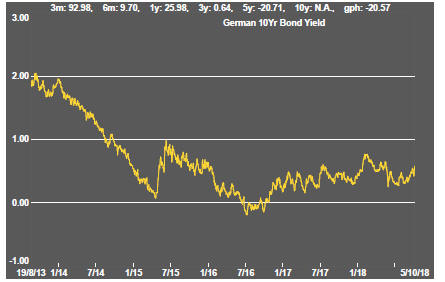

US bond yields have pushed higher although the size of the rise has been more symbolic than substantive.
Globally, yields have also been on the rise. Italian government fiscal policies, criticised by other European Union governments, are once again raising concerns about regional financial stability.
Overall, nothing is happening in global interest rate markets which had not been previously flagged. Markets are proving less forward looking than they are usually given credit for.
US President Trump continues to murmur in the background about the Fed’s interest rate policy. He has deferred explicitly to Fed independence but continues to position himself so as to blame the Fed if the central bank happens to drag growth lower in the near term and starts to hold back employment growth, particularly in the regions in which the Fed president is relying most for his political support.
Exchange Rates
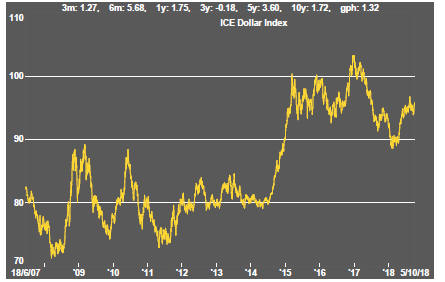
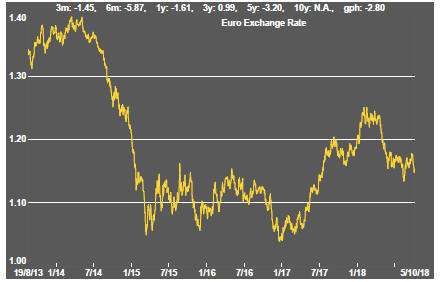
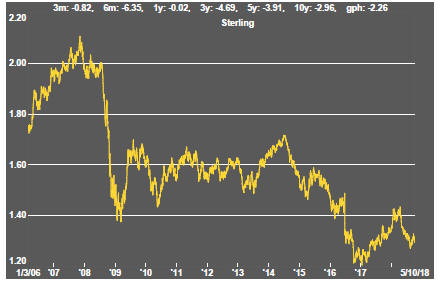
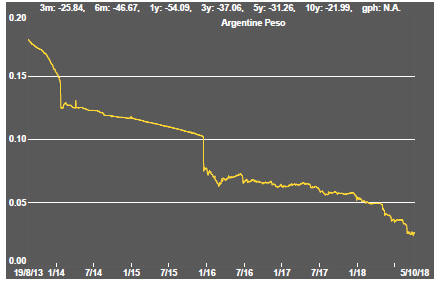
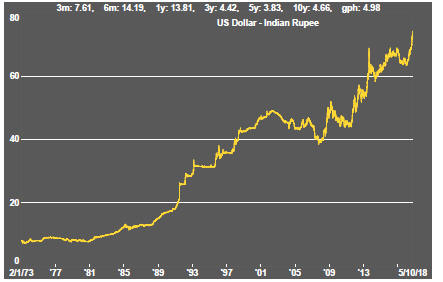

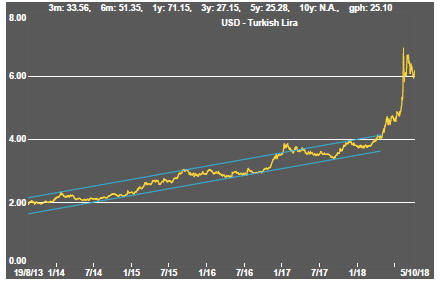

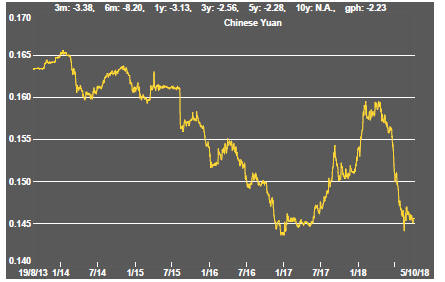

Exchange rate movements remain an important feature of the market landscape.
The US dollar firmed against the major trading partners of the USA amid expectations of rising relative interest rates. Sterling remains tied to sentiment about terms on which the UK will withdraw from the European Union and whther agreement can be recahed within the next few weeks.
The likelihood of further US interest rate rises is putting pressure on developing country currencies. With US rate rises expected to persist over the next 12 months, developing country currency depreciation will be an ongoing risk with a potentially negative impact on global growth outcomes. A stronger US dollar will also negatively impact US dollar denominated commodity prices.
The stronger US dollar remains a constraint on US corporate earnings and the competitiveness of US companies.
Expectations that US interest rates will keep rising bringing with it further upward exchange rate pressures risks becoming an obstacle for US equity prices as earnings and economic growth momentum diminishes.
Commodity Prices
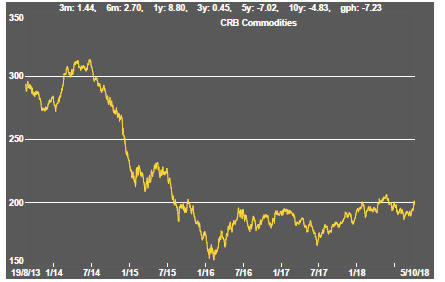
The general upswing in commodity prices since mid 2017 had been given added impetus by stronger crude oil prices.
Diminished momentum has left prices within the bounds of a cyclical trough, albeit at the upper end.
The flip side of the benefits for commodity producers and exporters of higher commodity prices is the cost pressure now being experienced by users of agricultural and raw material commodities. Reporting companies have been suggesting this as a source of margin compression.
Business surveys closely watched by central banks are showing signs of upward pressure on selling prices as a result of higher raw material prices.
Gold & Precious Metals
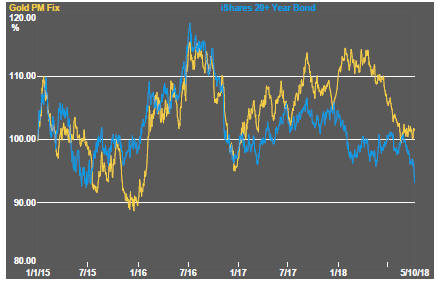
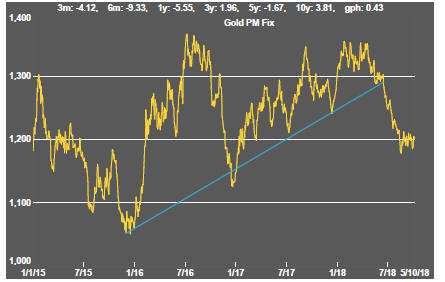
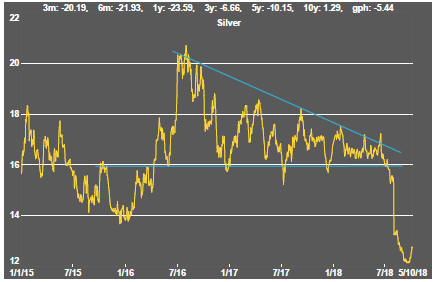
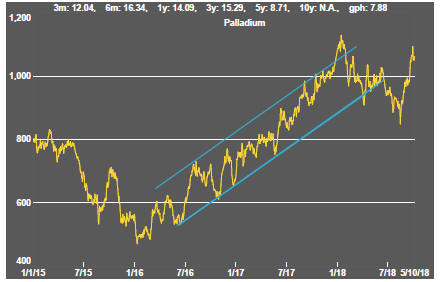

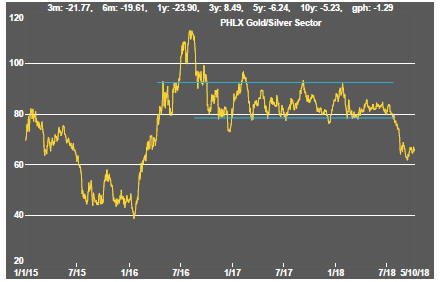
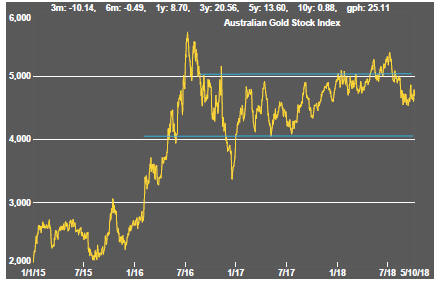
The bond price direction is at odds with the relative stability in the gold price which appears in a near-term holding pattern after its sell-off through the middle part of 2018.
Gold and silver prices have attracted bids after recent sharp drops but are encountering strengthening headwinds from financial markets.
Gold related equity prices have also stabilised despite the weakness in US equities. The weakening Australian dollar has proffered some support for Australian prices although this base may be threatened in the event the Australian dollar loses ground more precipitously and, in doing so, frightens away international investors.
Nonferrous Metals

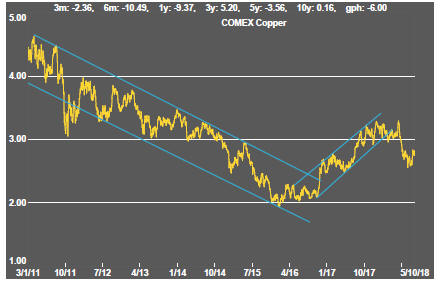
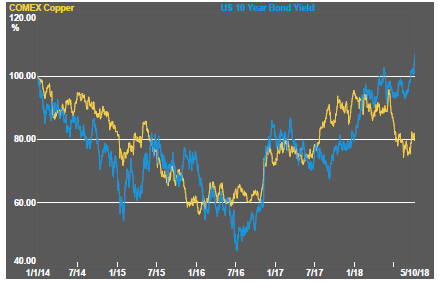
Daily traded non ferrous metal prices were a mixture of modest gains and losses during the week.
The divergence between copper prices and US government bond yields remains suggestive of a need for some further relative adjustment between the two. The circumstances supporting higher yields would normally also support higher copper prices whereas the latter appears to be weighted more heavily to a prognosis for a slowing global economy.
Bulk Commodities

Chinese economic growth reports show the national economy meeting its targets, as one would expect for a centrally planned economy, but suggest it is only doing just enough. There are no signs of upside risk. The tariff fight with the USA is beginning to take a toll on activity rates in an economy with a bias toward less strong growth in the years ahead, in any event.
The latest manufacturers purchasing managers index for China, measuring conditions in September, implied a slowing momentum albeit within the context of a still expanding sector. The fall in the monthly reading was the largest since October 2017.
Higher steel prices have not been reflected in stronger iron ore price outcomes despite the improved profitability of the steelworks. Higher production is possibly in anticipation of more government construction stimulus to keep growth on target. There is also uncertainty about the extent of production curbs over the balance of 2018 as environmental restrictions on production are implemented. .
Coal prices continue at high levels reflecting China’s drive to source cleaner energy and as constraints on new mine development keep a rein on supplies.
Oil and Gas

Crude oil prices retained their upward bias with a gain over the past four weeks just under 10%.
OPEC has been losing control of the market as US and Russian production has become more significant and while several OPEC members lose their historical clout.
Reimposition of Iranian economic sanctions by the US government has put upward pressure on prices. The failure of effective government in Venezuela has been another contributing influence on higher prices.
The Iranians have been lobbying European countries to prevent more widespread application of sanctions but the likelihood of relief appears slim as long as funds must circulate through US banks.
US production, in any event, continues to rise and is now matching output from Russia and Saudi Arabia. Texas alone is positioned to be the third largest producer after Russia and Saudi Arabia. Export infrastructure limitations may be the greatest impediment to US production having a greater effect on international energy prices.
Despite the change in tone within crude oil markets, related equity prices have been muted in their responses, implicitly signaling scepticsm about the sustainability of price rises when they have occurred.
Battery Metals
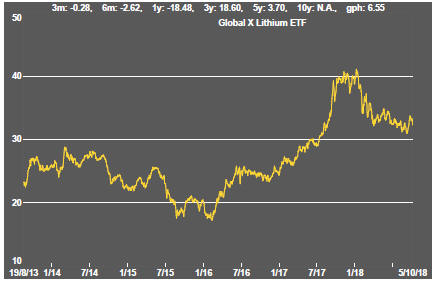
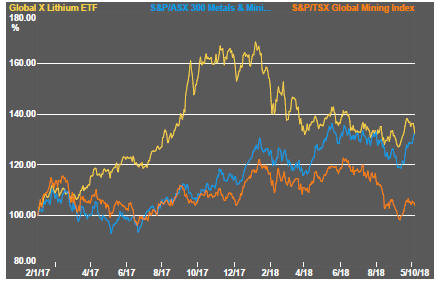
Eighteen months of rising lithium-related stock prices have given way to a prolonged period of market reassessment as a lengthy pipeline of potential new projects has raised the prospect of ongoing supplies better matching expected needs.
Potential lithium producers have been able to respond far more quickly to market signals than has been the case in other segments of the mining industry where development prospects have been slowed by reticence among financiers to back development.
Movements in lithium related equity prices had been aligned more closely with overall sector equity prices in recent weeks with the lithium stocks tending to display a greater leverage to changes in market sentiment about the mining sector.
The divergence in the past week between US dollar denominated prices of lithium stocks and the Australian sector market leaders will have reflected the weaker Australian dollar and the focus on size in an attempted flight to quality.
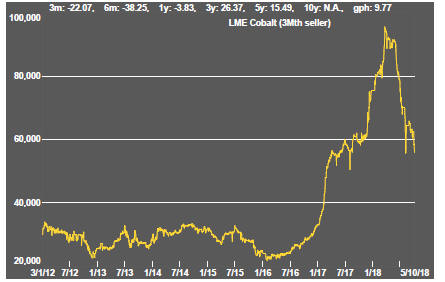
Battery metals remain a focal point for investors with recent attention moving to cobalt and vanadium.
Doubts about political conditions in the Democratic Republic of the Congo (and instances of Ebola) have added a dimension to cobalt prices lacking in other metals caught up in the excitement over the longer term impact of transport electrification.
In the longer term, cobalt is the most vulnerable of the battery related metals to substitution with high prices likely to stimulate research in that direction.
A spokesperson for Panasonic, manufacturer of batteries for Tesla motor vehicles, has been quoted as saying that the company intends to halve the cobalt content of its batteries because of uncertainties over supply although, offsetting such a move, will be the rapid increase in the number of units produced.
Uranium
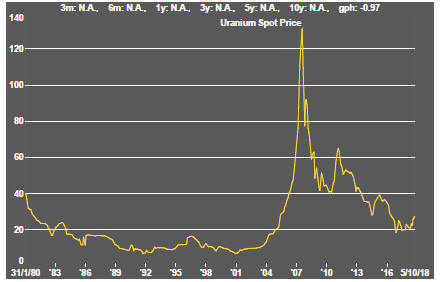

The uranium sector is in the midst of forming a prolonged cyclical trough as market balances slowly improve. Power utilities are still not prepared to re-enter the market for contracted amounts of metal to meet longer term needs. A slight upward bias in prices has been evident in the past month.
Slightly higher equity prices from time to time, in the hope of improved conditions, have not been sustained but could be repeated as speculation about improved future demand ebbs and flows. The effect of an announcement by Canadian producer Cameco to extend the duration of its previously implemented production cut gave the market a very slight but quickly lost lift.
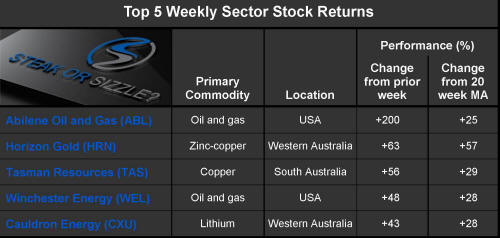
The Steak or Sizzle? blog LINK contains additional commentary on the best performed stocks in the sector and the extent to which their investment outcomes are underpinned by a strong enough value proposition to sustain the gains.


